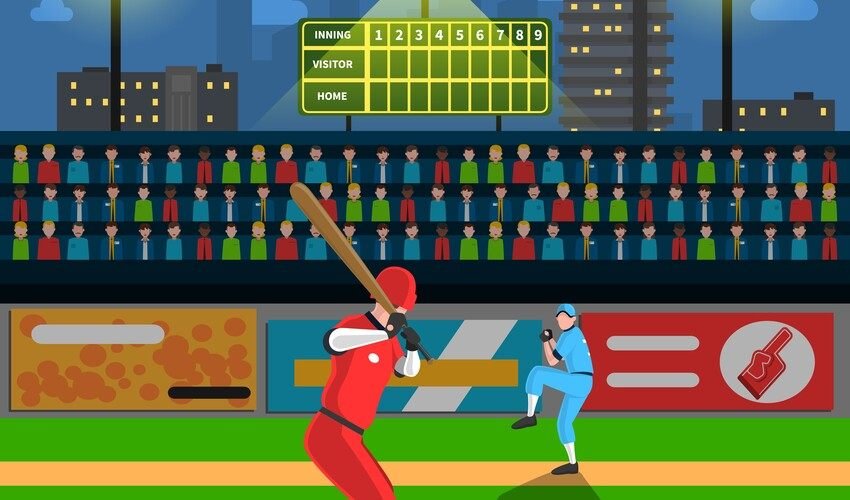Open-world gaming has always captured the imagination of players by giving them freedom, immersion, and endless opportunities to explore virtual environments. From the dusty streets of Grand Theft Auto III to the vast playground of GTA V, Rockstar Games has consistently raised the bar for what an open-world game can achieve. Now, as we peer into the future, the idea of GTA 2050 sparks curiosity and speculation: What would the next evolution of open-world gaming look like when technology, creativity, and player demands converge in unprecedented ways?
This article dives into the futuristic possibilities of GTA 2050, envisioning how it could redefine gaming as we know it.
A New Era of Immersion
Open-world games today already feel realistic, but by 2050, advancements in graphics, artificial intelligence, and hardware will make virtual cities indistinguishable from real ones. GTA 2050 could harness photorealistic environments powered by quantum computing and hyper-advanced game engines. Players might explore cities where every building is fully accessible, every street has its own micro-story, and NPCs behave with lifelike unpredictability.
Virtual reality (VR) and augmented reality (AR) would likely play a major role. Imagine slipping on a lightweight headset—or better yet, using neural interface technology—to step directly into Los Santos or a futuristic city. Your senses could be fully engaged: the sound of traffic, the touch of rain, and the energy of neon-lit nightlife all blending seamlessly.
Intelligent NPCs and Evolving Storylines
One of the defining aspects of a great open-world game is how its non-playable characters (NPCs) behave. Currently, NPCs follow scripted routines, but in GTA 2050, artificial intelligence could create characters with complex emotions, memory, and adaptive behavior.
Instead of walking past an NPC who repeats the same line of dialogue, players might encounter virtual citizens who remember previous interactions, react differently depending on choices, and evolve as the game progresses. If you accidentally cause chaos in one district, word could spread across the city, shaping how NPCs treat you.
Dynamic storylines could also emerge, where missions aren’t static but adapt to your gameplay style. Rather than being told to complete “Mission A, then Mission B,” the game’s AI might weave a personalized narrative. No two players’ journeys through GTA 2050 would ever be the same.
Hyper-Connected Multiplayer Worlds
Rockstar’s leap into multiplayer with GTA Online was revolutionary, creating a digital playground where millions interact daily. But GTA 2050 would take this to the next level with massively connected, persistent worlds.
Instead of lobbies or sessions, players could exist in a single continuous city, hosting millions simultaneously thanks to futuristic servers and cloud computing. Friend groups could own entire skyscrapers, neighborhoods, or even districts, turning the city into a living, breathing community of real and virtual interactions.
Advanced moderation powered by AI could prevent griefing or toxic behavior without human intervention, ensuring a smoother social experience. Players might also collaborate on city-wide events—like cyber-heists, futuristic sports, or resistance movements—that reshape the in-game world.
Vehicles and Futuristic Exploration
No Grand Theft Auto game is complete without vehicles, and GTA 2050 would showcase the future of transportation. Picture autonomous flying cars, hoverboards, underground maglev trains, and even teleportation hubs within the city.
Customizing vehicles could go beyond paint jobs and performance upgrades. Advanced nanotechnology and modular engineering might let players redesign cars entirely—shifting a sports car into a jet, or a motorbike into a drone with a few in-game commands.
Exploration could also stretch beyond city limits. With expansive maps, players might travel to the ocean floor, orbiting space colonies, or even parallel virtual dimensions, blending science fiction with urban realism.
Enhanced Player Freedom
Freedom is the essence of GTA. Players love the ability to choose whether to follow missions, explore, or simply cause chaos. GTA 2050 would expand this freedom to unimaginable levels.
-
Legal Paths of Gameplay: Instead of just a criminal underworld, players could fully immerse in legal careers like becoming a politician, running corporations, or building entertainment empires.
-
Criminal Evolution: For those who enjoy heists and underworld dealings, cyber-crime, hacking, and virtual black markets could become central gameplay mechanics.
-
Societal Impact: Player actions might permanently reshape the city—destroying a building could remove it from the map for everyone, while creating a thriving business could attract real players as customers.
This level of agency would make the game feel less like a sandbox and more like a fully functioning alternate reality.
Integration with Real-World Technology
One of the most exciting aspects of envisioning GTA 2050 is its integration with real-world tech. By 2050, the boundary between real and digital life may blur, and Rockstar could leverage that overlap:
-
Cryptocurrency & Virtual Economy: Instead of fake in-game money, a blockchain-based economy might allow players to trade virtual assets with real-world value.
-
Real-Life Data Integration: Imagine your local weather syncing with the game’s environment or city events reflecting global trends.
-
Cross-Platform Universes: Whether on consoles, PC, VR, or even mobile neural implants, every device could access the same persistent world.
Ethical and Cultural Considerations
While the possibilities are thrilling, GTA 2050 would also need to address ethical challenges. Hyper-realistic violence, lifelike AI, and blurred lines between reality and simulation could raise concerns. Developers might implement customizable morality settings, allowing players to filter the intensity of realism.
Cultural inclusivity will also be essential. A futuristic GTA should represent diverse voices, identities, and perspectives while avoiding outdated stereotypes. This would not only enrich the gameplay but also reflect the multicultural realities of 2050 societies.
The Future of Open-World Gaming
Open-world games have always been about freedom, immersion, and pushing technological boundaries. GTA 2050 wouldn’t just be another sequel; it could serve as the blueprint for the future of gaming itself. Combining artificial intelligence, virtual reality, real-time global connectivity, and limitless player freedom, the experience could transcend entertainment, becoming a second life where creativity and community thrive.
The dream of exploring a living, evolving, futuristic city that feels indistinguishable from reality may sound ambitious—but so did the first Grand Theft Auto in the late 1990s. If history is any indicator, the gaming world should prepare for a revolution.
FAQs:
1. What is GTA 2050?
GTA 2050 is a conceptual look at the future of the Grand Theft Auto franchise, imagining how open-world gaming could evolve by 2050.
2. Will GTA 2050 use VR and AR?
Yes, it’s expected that immersive technologies like VR, AR, and possibly neural interfaces will play a major role in future gameplay.
3. Could GTA 2050 feature real-world economic systems?
Possibly. Future open-world games may integrate cryptocurrency, blockchain, and real-world value systems into their in-game economies.
4. How will NPCs evolve in GTA 2050?
NPCs may become fully AI-driven, capable of remembering player actions, adapting behaviors, and evolving in response to the game’s environment.
5. Will GTA 2050 still focus on crime?
Yes, but it could expand beyond traditional crime into futuristic themes like cybercrime, corporate manipulation, and political intrigue.
Read Dive is a leading technology blog focusing on different domains like Blockchain, AI, Chatbot, Fintech, Health Tech, Software Development and Testing. For guest blogging, please feel free to contact at readdive@gmail.com.





